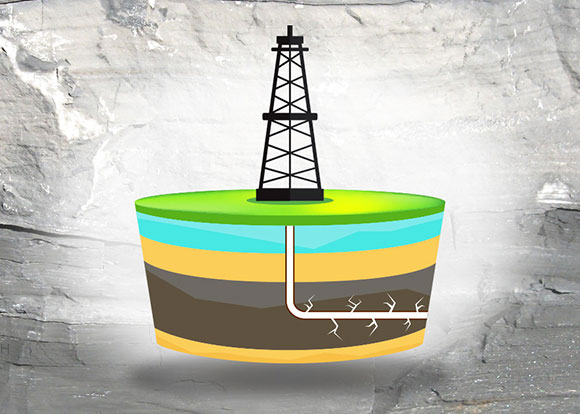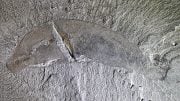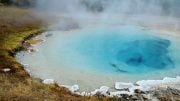
Yale engineers suggest organic compounds in Pennsylvania’s groundwater aquifers come from surface releases during hydraulic fracturing, not from gas wells or deep shale layers.
Engineers at Yale University reveal that the presence of organic compounds in groundwater aquifers in Pennsylvania is likely the result of surface releases from hydraulic fracturing operations and not migration from gas wells or deep shale layers.
In the largest study of its kind, a Yale-led investigation found no evidence that trace contamination of organic compounds in drinking water wells near the Marcellus Shale in northeastern Pennsylvania came from deep hydraulic fracturing shale horizons, underground storage tanks, well casing failures, or surface waste containment ponds.
The presence of organic compounds in groundwater aquifers overlying the Marcellus Shale is likely the result of surface releases from hydraulic fracturing operations and not migration from gas wells or deep shale layers, according to researchers in the lab of Desiree L. Plata, assistant professor of chemical and environmental engineering at Yale. The results of the study were published in the journal Proceedings of the National Academy of Sciences. Brian Drollette, a Ph.D. student in Plata’s lab, is the lead author.
Due to its vast reserves of natural gas, the Marcellus Shale has become an active site for hydraulic fracturing. During a period of rapid natural gas well expansion, the researchers regularly visited the northeastern region of Pennsylvania, covering about 7,400 square kilometers, over three years and obtained 64 samples from the drinking water wells of residential properties.
Using a suite of chemical analyses, the researchers found that a subset of the groundwater samples contained low levels of organic compounds in areas close to natural gas wells. The analyses also indicated that these compounds most likely entered the groundwater supply from gas extraction operations above the ground surface — and not subsurface migration.
“These tests showed that there is some separation, both in space and time, of the materials that they’re injecting into the deep horizons and the groundwater sources,” Plata said.
A compound-specific analysis also revealed the presence of a hydraulic fracturing fluid additive in the affected water samples. Chemicals found in the water did not exceed any state or federal limits, and many were detected only because the researchers were using sophisticated and very sensitive instruments. None of the contaminants were derived from the shale itself.
“The dominant chemicals that we found are industrial-sourced materials and don’t have any known natural sources,” Plata said.
Due to limited data, it’s difficult to compare the rate of these spills to other types of fuel spills, the researchers said. “In general, there is a risk in any industrial activity associated with accidental failures, and we can’t compare this industry to any other fuel extraction or transport process without knowing the relative volumes of spilled and transported materials,” Plata said.
The researchers said the results are encouraging, since surface violations are known entities and the drinking water sources that have been affected by the surface spills can be targeted for monitoring and treatment.
In both geographic area and quantity of samples, the study is the largest to look at the distribution of organic chemicals related to hydraulic fracturing operations. Plata noted, however, that the study results shouldn’t be used to draw conclusions about the effects of hydraulic fracturing in other regions.
“Subsurface geology is wildly different across the United States,” she said. “While there are shale deposits across the country, the geology above those shale deposits is highly variable, so in some places you might have much different communication between the deep formation fluids and the shallow ground water.”
Reference: “Elevated levels of diesel range organic compounds in groundwater near Marcellus gas operations are derived from surface activities” by Brian D. Drollette, Kathrin Hoelzer, Nathaniel R. Warner, Thomas H. Darrah, Osman Karatum, Megan P. O’Connor, Robert K. Nelson, Loretta A. Fernandez, Christopher M. Reddy, Avner Vengosh, Robert B. Jackson, Martin Elsner and Desiree L. Plata, 12 October 2015, PNAS.
DOI: 10.1073/pnas.1511474112









I believe that PHD Drollette has no knowledge of how the concrete sealing of the well casings and the surrounding stratas has never been proven to be as exacting as the drillers have stated and there is migration between underground strata that can and will contribute to the polluting of groundwater when conditions permit it and even if anyone states otherwise as has been the many conclusions by pro-fracking supporters who have a conflict of interest.
Well, seems like Yale are selling out their name. NPO findings shows the same compounds in the wells as those that are pumped underground by the fracking industry. EPA was proven to withold information that showed discrepancies between the official standpoint and reality that favoured the citizens and not the corporations.
Wells also fail to hold structural integrity in up to around 30% of the cases during the first 5 years.
[Everything is stated as opinion, for legal reasons]
*Please read up on this by turning to neutral sources for numbers – NPO’s there has also been several docu’s that shows that the absolutes presented by corp lobbyists and two of the gaspositive reports are false.